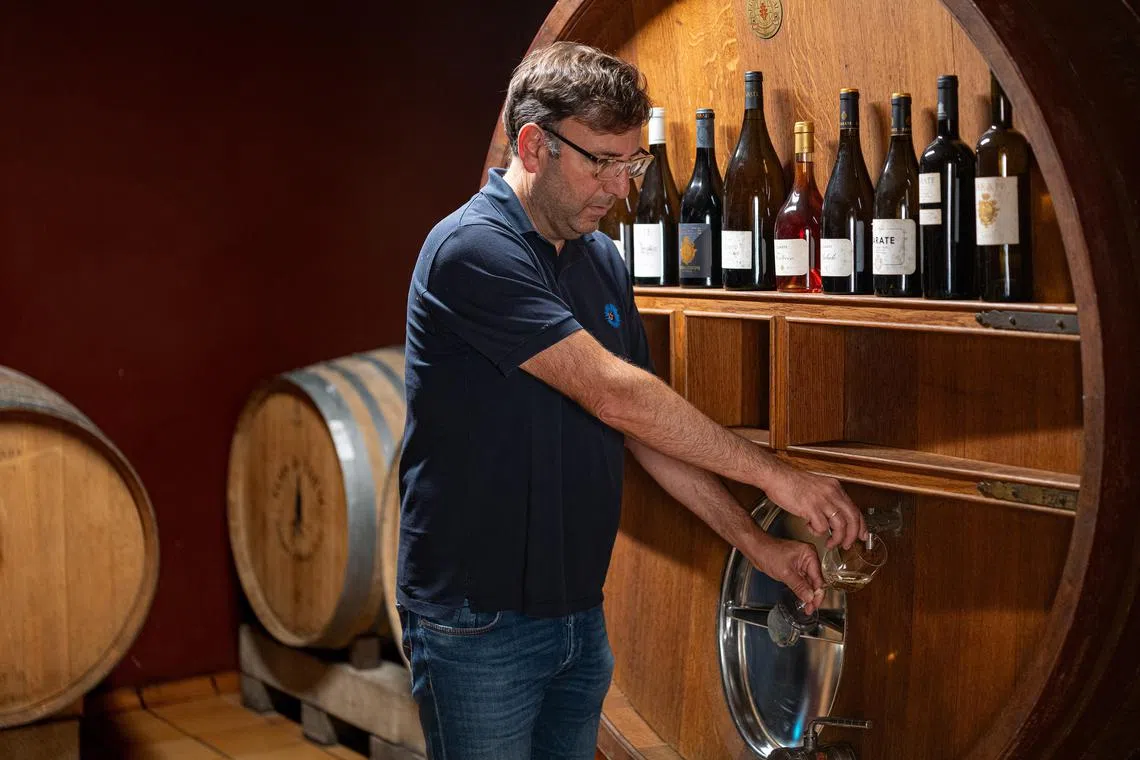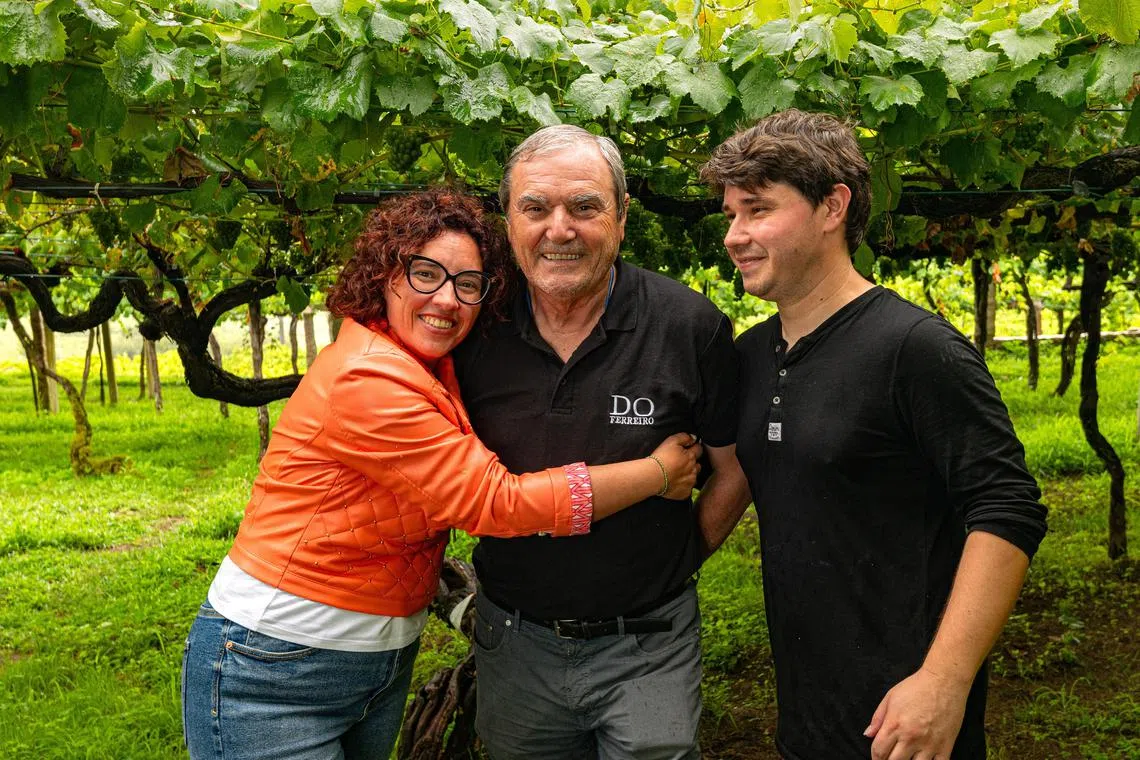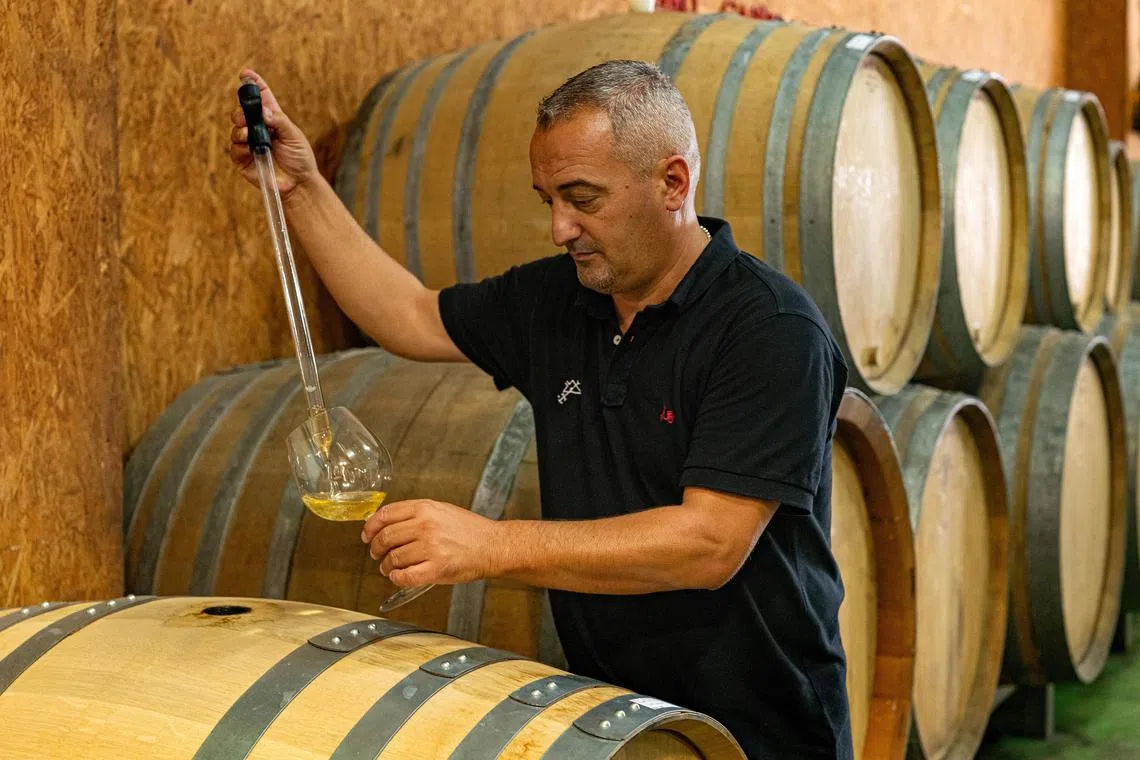Is albarino the next great white wine? It depends
HERE in Rias Baixas, the Galician home of albarino in north-western Spain, the most typical answer to a direct question is: “It depends.”
It’s not that Galicians are non-committal or hedging their bets. It’s more that they are aware of the complexity of many situations and don’t want to overly simplify matters.
That’s why if you ask a winemaker here about the future of albarino, or best practices for growing the grapes or making the wines, the response you are most likely to get is: “It depends.”
The answers to these sorts of questions are especially pertinent now as Rias Baixas is at an inflection point. Since the wine region became an appellation in 1988, growers and winemakers have been encouraged to produce albarino – and plenty of it.
The result has been a popular commodity wine: cheap, aromatic, easy to drink and forget. In many people’s minds, that’s all albarino can be.
Yet, as is so often the case with wine, ideas about a grape’s potential for complexity and ageing become fixed not because of a grape’s actual limits, but because few people have tried to make anything more of it. But when a producer treats a grape more ambitiously, things begin to change – just look at aligote, silvaner and bobal. How albarino is farmed and what sort of wine is intended will dictate its potential.
In Rias Baixas, a growing group of farmers and producers are exploring albarino’s capabilities, farming the grape with care and sensitivity, and experimenting with different methods of making the wine.
In the process, they have demonstrated that albarino can produce wines that age for decades and offer captivating complexities. And beyond albarino, they are re-examining the region’s history, resurrecting forgotten grapes and neglected vineyards, and finding excellence just as other parts of Spain, such as sherry country and Sierra de Gredos, have done.
Rather than settling for simple and fruity, some winemakers in Rias Baixas are producing singular albarinos – savoury, saline and contemplative, perhaps recalling bottles of old.
“Albarino in the past was an aristocratic wine,” says Eulogio Pomares, a walking Galician history book who with his wife, Rebecca, makes excellent wines under the Zarate label. “People used to grow red grapes to drink every day. Only the rich grew whites.”

Albarino must have been rare. Galicia historically was one of Spain’s poorest, most isolated regions, and one of its most unusual. Unlike the rest of Spain’s population, its settlers were Celtic. In addition to Spanish, most Galicians speak Galego, a language that has as much in common with Portuguese as with Spanish.
Everywhere you look in Rias Baixas, you see granite. Houses are made of granite. Floors, too, walls, even bathroom sinks. You can see giant boulders, and old granite quarries, as well as granite horreos, ancient structures for storing crops several feet above ground to protect against animals. Some are topped with both granite crosses and old Celtic fertility symbols, because, well, it depends.
Granite, whether decomposed as soil or as granite bedrock underneath, shapes the wine and gives it character. So does the climate. Rias Baixas is among the muggiest areas in Spain, in part because of its proximity to the Atlantic. Mildew and rot are constant threats to the grapes.
Partly in response, the region developed a pergolalike parra system, in which vines are trained six to eight feet off the ground on pillars to overhead crossbeams, all made of granite. The system permits air to circulate underneath, keeping the vines cool and mitigating the humidity, while permitting subsistence farmers to plant other crops, such as potatoes or carrots, underneath.
Rias Baixas is historically a land of tiny vineyards, and parras are everywhere – in backyards and in front. In 1988, the first year of the appellation, the region produced about 500,000 bottles, Pomares says. Now, annual production is about 50 million.
“In the 16th century, corn was much more important than grapes,” he says. “On rock and granite, where corn wouldn’t grow, that’s where they planted vines. Those farmers were much more intelligent. They had a place for corn, a place for cows, a place for vines. Now, vines are everywhere.”
That’s become a problem as albarino has grown in popularity. Companies and cooperatives making cheap albarinos have planted in fertile, loamy soils. Big companies have also moved in, hoping to add an albarino to their portfolio. They are outbidding local producers for grapes, says Alberto Nanclares who, with his partner, Silvia Prieto, makes superb wines under the Nanclares y Prieto label.
“These people are breaking the market.”
Their wines may be cheap, but they cannot compare with those of Zarate or Nanclares y Prieto. A 2015 Zarate El Palomar, from a tiny vineyard planted by his wife’s family in 1850, was rich, pure and profoundly mineral. A Nanclares y Prieto 2013 Coccinella Cepas Vellas, made from century-old vines, was fresh and saline after 10 years.
Wines like these are relatively expensive for albarino, roughly US$50 a bottle, if you can find them. They are made in tiny quantities and snapped up. But even basic cuvees from these producers, around US$25, are a major step above the US$12 bottles from the big companies and cooperatives.
The idea of making long-lived albarinos is not new. Two estates, Do Ferreiro and Pazo de Señorans, have produced wonderful, multidimensional albarinos since the 1990s.
Gerardo Mendez started Do Ferreiro with his father, Francisco, in 1988, the year the appellation was formed. His family had long made wine at their home, like many small farmers.

“When the wine was made at home, it was meant to age,” he says. “As Rias Baixas began, the companies said they needed wine that could go on the market right away.”
Mendez, who now works with his son, Manuel, and daughter, Encarna, saw no reason to change styles. His basic albarino is delicious and can age for a decade or more. But the real treat is the Do Ferreiro Cepas Vellas, made from old vines around the Mendez home. A 2016 was gorgeous – intense, concentrated and textured.
Manuel and Encarna have expanded production to include several single-vineyard wines. Manuel, who is in charge of viticulture and winemaking, is a questioning sort who does not accept the conventional wisdom. He thinks the parra system is often great, but not always.
“It depends,” he says.
He replanted their Tomado do Sapo vineyard a few years back, changing it from parra to conventional trellises, because the foggy site caused rot. Trellises, he says, work better there.
Pazo de Senorans is an exception to the story of small producers. It’s an old estate, with a manor house and a large production facility. Marisol Buena runs the winery with her daughter Vicky Mareque Buena and the winemaker, Ana Quintela Suarez. Their first vintage also coincided with the beginning of the appellation, and they haven’t changed their style.
“People thought we were crazy,” Mareque says. “They thought albarino should be young and fruity. My mother and Ana said, ‘If they don’t buy it, we’ll drink it ourselves.’”
Their wines are built to last. My favourite is the Seleccion de Anada, a single-vineyard bottle that is aged at the winery for 10 years before release. The current release, 2013, is creamy, saline and mineral but very young. The 2005 was super fresh, expressive and at a peak now.
Other exceptional albarino producers include Rodrigo Mendez, a nephew of Gerardo of Do Ferreiro, and Bodegas Albamar, where Xurxo Alba is transforming his viticulture to organic and biodynamic and making excellent bottles, including 69 Arrobas. The 2020 was lovely and rich.
Rodrigo Mendez is an experimental, self-critical farmer and winemaker who is exploring both reds and whites. His albarinos, bottled under the Leirana label, include the Finca Genoveva, made with grapes from an ancient vineyard whose owner can no longer farm it. So, Mendez took over the farming. The 2022 Finca Genoveva was a delight, super-mineral, focused and saline.

An unlabelled bottle that had been stored in the old winemaking facility at that vineyard was gorgeous and expressive. Wreathed in cobwebs, it was emotional to open and drink.
“Old bodegas are an object lesson,” Mendez says. “They did nothing to the wine, and look how well it survives. That’s why we are trying to preserve these traditions. The more you touch the wine, the weaker it gets.”
These six albarino producers, in alphabetical order, are among the best and most interesting in Rias Baixas.
Bodegas Albamar: Pure, intriguing albarinos and many other wines, too. Selections de la Vina, Brooklyn, New York
Do Ferreiro: Each of its albarinos is superb, especially Cepas Vellas, or old vines. Give it a minimum five years of ageing. De Maison Selections, Chapel Hill, North Carolina
Nanclares y Prieto: Excellent albarinos, bottom to top. Jose Pastor Selections/Llaurador Wines, Fairfax, California
Pazo de Senorans: Benchmark producer making top-notch albarinos. Seleccion de Anada is especially fine. European Cellars, Charlotte, North Carolina
Rodrigo Mendez: Experimental, analytical producer who makes terrific albarinos under the Leirana label. Ole & Obrigado, New Rochelle, New York
Zarate: Wonderful albarinos, especially single-vineyard El Palomar. Rare Wine Company, Brisbane, California
Decoding Asia newsletter: your guide to navigating Asia in a new global order. Sign up here to get Decoding Asia newsletter. Delivered to your inbox. Free.
Share with us your feedback on BT's products and services


